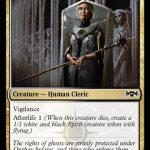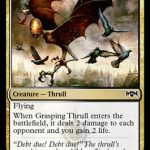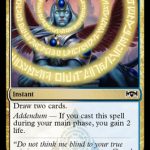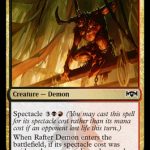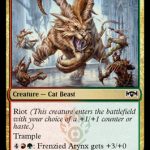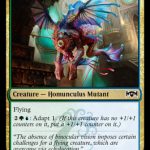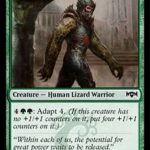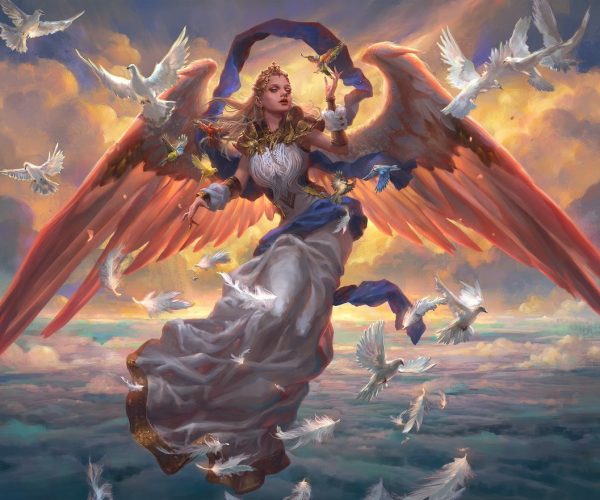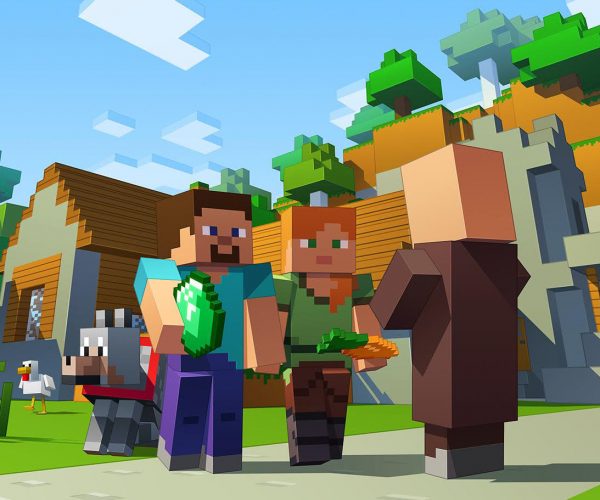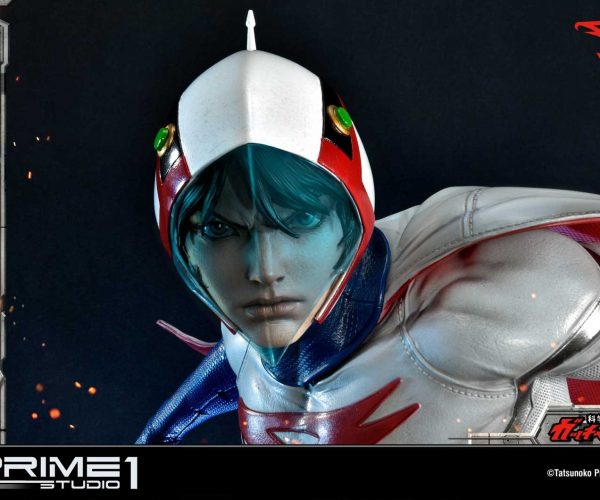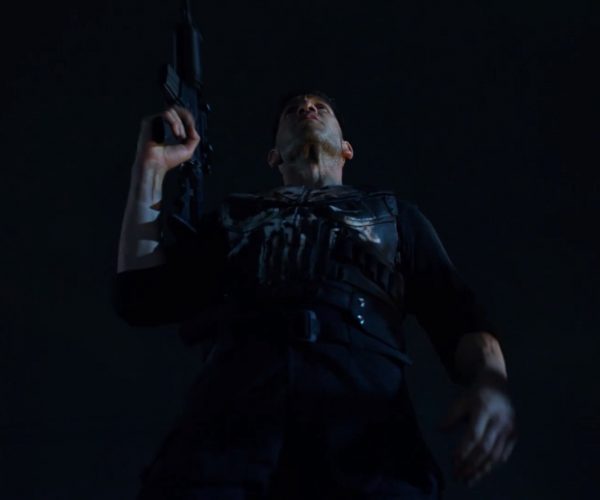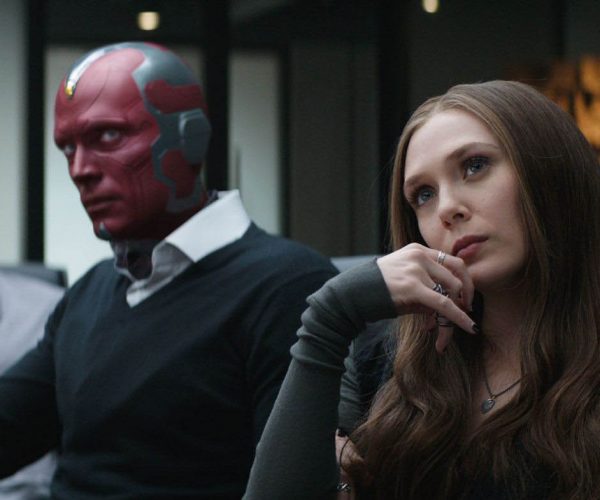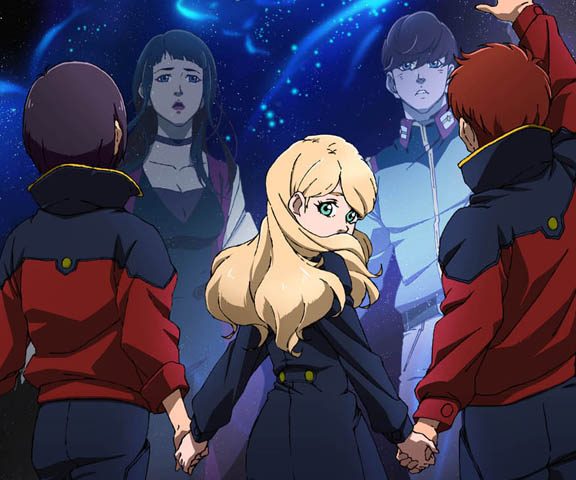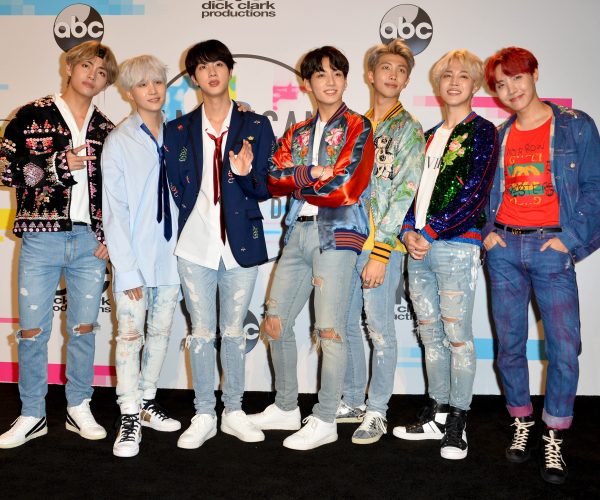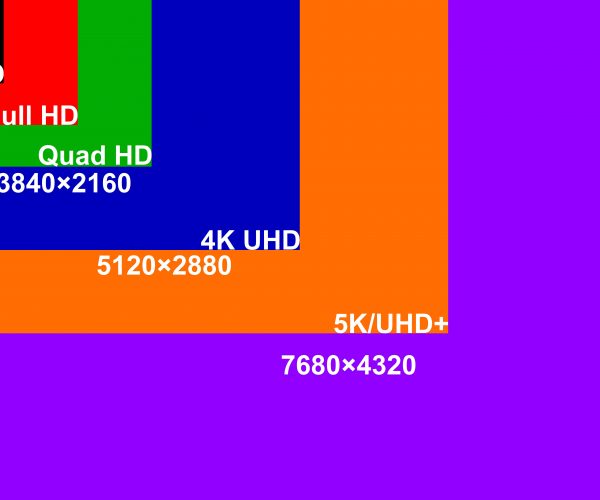Magic: The Gathering is a few mere weeks away from releasing its 80th expansion set, Ravnica Allegiance, offering its second glance at the popular Ravnica setting for the second time in half a year. Last time in Guilds of Ravnica, Wizards of the Coast elevated five of the setting’s guilds into the current Standard rotation with the promise of the remaining five to be available with this first release of 2019.
Ravnica is a plane in the Magic universe that is entirely overtaken by a single city. Ten guilds populate the city and keep one another in check as they operate different functions of a society. Each guild comprises of two colors of Mana, and each of these guilds provides the namesake for the color combination. For example, in Guilds of Ravnica, we saw Golgari, which is Magic lingo for the Black/Green color combination, and we saw how it functions as both the plumbers and the farmers of the city, using the waste of the other guilds and the dead bodies of fallen rival guild members to grow food.
Naturally, each guild also uses their assigned role in the city to gain power. Once again, we turn to the Golgari, who lurk under the city, slowly but surely taking advantage of their sewage role. Fallen soldiers make for perfect zombies to fill their ranks, and fungus spores spread quite nicely to grow into hideous beasts. The Golgari use black regenerative Magic to ensure their numbers are always swelling, waiting for the day that they are the most powerful.
And they are not alone in this exploitative ambition. Along with the other four guilds we talked about last time, the five remaining guilds will join in the struggle to take the city in Ravnica Allegiance as the mind-bending dragon Nicol Bolas turns them on one another.
Today, we’ll talk about their color combination, their role in the city, their tactics in the actual gameplay, and a single common card that best sums up what you want to do if you’re in this color combination.
Orzhov
White/Black
The Orzhov Syndicate, represented by White/Black mana, takes the worst of both colors to go about its ambition. Black is often known as the power-hungry color that will do whatever it takes to gain what it wants, while White is known for its order and retaliatory measures. The two have long been rivals and don’t seem to work well together on paper, but in Ravnica, they come together in the most genius way to gain power through order… the banks!
Orzhov is one of the more smartly designed guilds on Ravnica, running money everywhere through the city and gaining influence by promising afterlife in exchange for coin. Many of those that work in the guild are vampires, angels, ghosts, and corrupt humans who operate as priests.
And as most White/Black deck combinations from other sets, Ravnica Allegiance drags out Orzhov’s tactics for the long game. Plenty of creature removal, multiple ways to control the board, getting in for cheap damage here and there, holding out for something big to blow up. It functions sort of as a life gain deck, allowing you to secure your life totals while blowing up enemy resources, and its unique mechanic Afterlife is really cool. Any creature with Afterlife leaves behind flying 1/1 spirit tokens, allowing for an extra turn of both defense and offense.
In Limited Magic, expect this mechanic to be huge! Nothing feels worse that using a removal spell on a creature only to have it leave something behind.
Encapsulating Common:
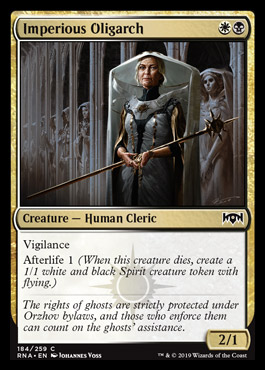
Perfect in every way! Imperious Oligarch’s casting cost might be a little restrictive, but she does exactly what Orzhov wants early in the game. She provides an aggressive body that can both attack and defend with ease. Vigilance, meaning no tapping while attacking, is basically free damage here and there if an opponent has no defending creatures, and the two power ensures that any creature that interacts with Imperious Oligarch early in the game will surely die whether on offense or defense.
If that happens, the 1/1 token remains to fight another day while the opponent is left with nothing. Not a fair trade, but Orzhov is a bank and not interested in being fair.
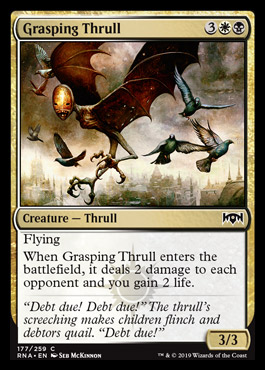
I’ll toss this one in here too because I like it. Five mana for a 3/3 flyer is a good price at common in Magic, but the effect of a four point life swing is also rock solid for Orzhov. Gaining life while draining the opponent is always a White/Black technique that wins big.
Azorius
White/Blue
Azorius Senate is the law-making guild of Ravnica, if you can’t tell by the name. White’s quest for order and Blue’s quest for knowledge combine to make a guild that serves as the rule makers of the city. It might seem like the most legitimate of the guilds, but remember, no guild on Ravnica is pure at heart. Azorius often makes rules that benefit its own ambitions, and it seeks forever to keep the status quo, dishing out blind justice as it sees fit, relinquishing rival guilds of their magic and powers with the signing of a paper.
Blue and White are two of the strongest colors in Magic for control, meaning you’ll be countering spells, drawing cards, and waiting to bring down an army of knights, paladins, and mages to seal the deal. White/Blue in Ravnica Allegiance also relies heavily on its longtime tactic of flyers, with plenty of cheap birds and powerful sphinxes to soar above enemy blockers.
Aside from card draw and counterspells, this round of Magic introduces the Addendum mechanic. This mechanic is always attached to an Instant speed spell, which can be cast at any point in the game. Usually, Instant effects like card draw are best saved for the end of an opponent’s turn, when they don’t have the mana to interact with your spell or you just need to use up your own spare mana. However, Addendum grants extra benefits if the spell is cast during your main phase.
I’m not really convinced its that powerful of an ability outside of Limited Magic, but White/Blue should find a way to use it.
Encapsulating Common:
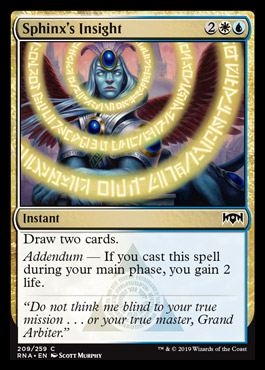
Case in point. Drawing two cards for four mana is mediocre on an Instant and bad on a Sorcery. However, the tacked on 2 life adds a nice little payoff if you’re looking to secure your life total.
Unless you’re holding a bad hand though, I doubt you would ever cast this during a main phase. Save if for the end of an opponents turn or if you ever find yourself flooded with mana.
Rakdos
Black/Red
As you might imagine, any guild that combines Blacks strive for power with Red’s tendencies for aggression isn’t going to play well with others. The Cult of Rakdos acts as an entertainment outlet for all the laborers and craftsmen of Ravnica, providing a reason for these everyday folk to push on in the face of this cruel and unforgiving power struggle. As is necessary, it provides theater and shows for these poor souls…
…and by that, it actually sadistically torments other guilds and does so with glee and delight. “Fun” is the word used by its demons, devils, goblins, imps, and cultist mages.
Black and Red always combine for aggressive decks with lots of cheap creatures, cheap removal, and most importantly, sacrifice abilities that cash in on their cheap creatures for powerful late game effects. In Ravnica Allegiance, Rakdos also introduces the Spectacle mechanic, which makes spells cheaper or more powerful if they are cast after an opponent has lost life this turn.
Encapsulating Common:
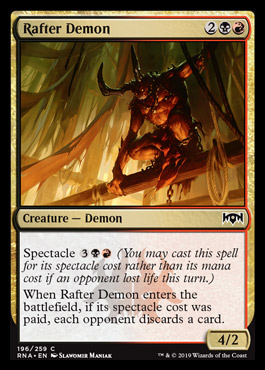
A 4/2 for four mana is pitiful in an aggressive deck, always too slow and dying easily to cheaper creatures. However, if played after Spectacle is triggered from life loss, a 4/2 for five mana that also forces a player to discard something is a much better deal. Card advantage attached to an aggressive deck is something I would be interested in…
…though not as much as straight up removal.
Gruul
Red/Green
Time to bring on the BEEF! When the uncontrollable powers of Red meshes with the big and nasty forces of Green, you get exactly as described: huge, unrelenting monsters. The Gruul Clans exist on the outskirts of the city, traditionally keeping these beasts at bay and protecting the civilization within from their destructive forces. However, recent times have seen the other Guilds intrude on their turf, and Gruul tribes, lacking any sort of unification, now exist as troublemakers, rioting, wrecking entire areas, looking to reintroduce the wilds of Ravnica to its citizens.
Naturally, the Gruul still have no problems capturing and taming cyclops, wurms, trolls, and hulking mammoths as well, hording them for future use whenever the time may come.
Red/Green, often called the “kiddie decks” of Magic thanks to its easy tactics, relies on ramping mana into huge, destructive beasts. That’s about it really. Play mana, control the board with Red removal or smaller creatures, wait for the big Green grunts to come down, watch as your opponent can’t withstand hits from 6/6 and 7/7 goliaths every turn. It might be kiddie, but boy oh boy do I love me some Gruul tactics!
This time around, Gruul also has the sweetest ability, which is called Riot. This simple mechanic allows players to choose between the long game or the short game, as Riot provides its creatures with haste, the ability to attack the turn a creature comes into play, or a +1/+1 country, making a creature a bigger, legitimate threat as soon as it hits the board.
Encapsulating Common:
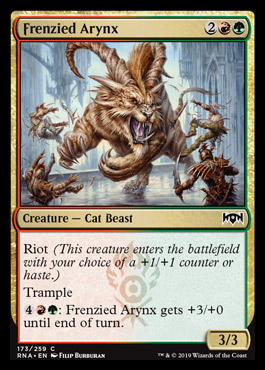
No question, this is the sweetest common we’ve seen so far. I’ll be drafting this thing a lot, seeing as how I’ll usually give preference to Red/Green decks when I play.
Frenzied Arnyx is a good deal however you play it, whenever you play it. A 3/3 with haste for four mana is nice early since it can catch players off-guard, delivering a sizable blow when blockers are tapped. Because it has trample in addition to haste, the Arnyx also plays well late if you can pump it up the turn it comes down, delivering a total of 6 damage. Even if the opponent has blockers up, this might be enough to close the game if you’ve kept up the pressure.
On the other hand, the Arnyx could be a 4/4 with trample for four mana that can pump itself later in the game to a 7/4! What an awesome deal at common! No downsides at all about this card. Take it, play it, win with it.
Simic
Green/Blue
And lastly, we find the Simic Combine, a collection of Blue’s thirst for knowledge and Green’s penchant for nature. These scientists are tasked with researching and preserving Ravnica’s wilds, finding the balance between civilization and nature necessary to keep their society at one with the Earth.
Of course, the Simic also use their jobs to conduct disgusting scientific experiments. The Magic community loves the idea of a group of merfolk, fairy, and human scientists altering the basilisks, trolls, drakes, elementals, and other monsters of Ravnica into unnatural abominations. These creations, which run opposite to the guild’s main objective, are far more powerful than their natural state and are enslaved to do the Simic’s bidding.
Simic’s ability of Adapt carries over from Ixalan’s style of Green/Blue decks and their +1/+1 counter tactics. With nothing more than simple mana, players have the simple option of putting counters on their creature, making them a bigger threat to deal with. While it might seem like an minimally powerful ability on its own, other cards in the set make use of +1/+1 counters as a resource. Removing counters here and there can cause damage, draw cards, gain life, counter spells, etc. We don’t have a full list of abilities just yet, but expect the design of this expansion to run wild with outlets for counters.
In Magic, securing as many resources as possible further ensures victory, and with a currency that opponents don’t have, you’ll always have that much more of an advantage.
Encapsulating Common:
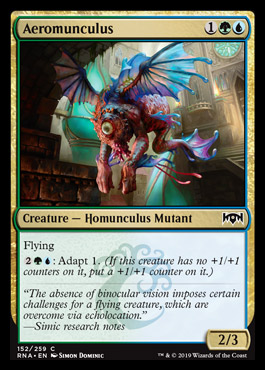
This is what you want to see at common. A 2/3 flyer for three mana is very good in Limited Magic, but the ability to turn him into a 3/4 flyer later in the game is also an excellent outlet whenever you have access mana with nothing to do. I also like the flavor since it’s exactly the kind of hideous beast the Simic are known to make.
Same with this guy.
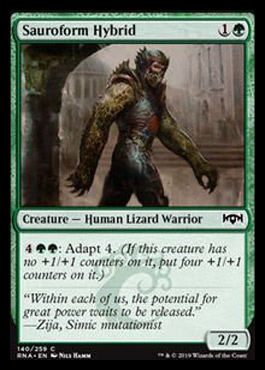
He’s a Human Lizard! That’s just messed up! He’s also a solid card. A 2/2 for two mana early in the game is good in any deck, but once you have the mana ready, making him a 6/6 could win you the game.
So far, I like what I see. Gruul is my favorite of the bunch, but that’s just playing to my favorite color combination. Riot provides a ton of options and choices for players to make, and the versatility between a quick beat down deck and a slower ramp deck offers two strategies depending on what your opponent is playing. I’m also excited to splash Blue into Gruul or Red into Simic to make the full Green/Blue/Red Temur decks as Riot and the Simic counter payoffs seem like a natural fit.
I also like what I see from Orzhov. White/Black also often emerges as one of my favorite color combinations to draft going all the way back to Battle for Zendikar, and that’s no different here. Resilience and lifegain drag a game out for better results in the end, and Afterlife seems ripe for exploiting, requiring opponents to kill blockers not once but TWICE. That’s almost like trolling…
As I said before, I’m mostly interested in Simic when it combines with Gruul.
Azorius isn’t really my thing since casting Instant spells in you main phase always feels bad, even if you are getting extra bonuses. Rakdos really needs a few ways to ensure damage besides attacking to be fully operational. If further spoilers have better triggers and rewards, these two combinations should be better.
TechnoBuffalo LLC (dba TheNerdy.com) has affiliate partnerships with various companies. These do not at any time have any influence on the editorial content of The Nerdy. TechnoBuffalo LLC may earn a commission from these links.

